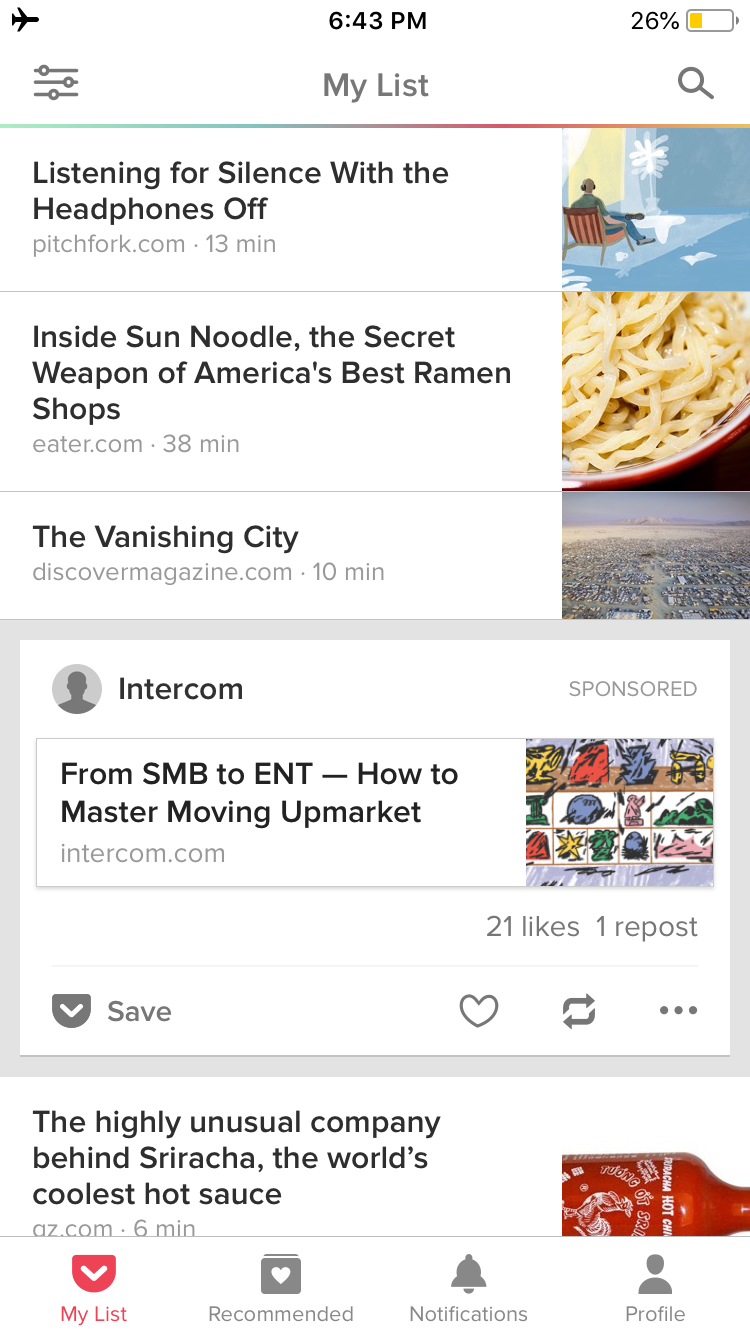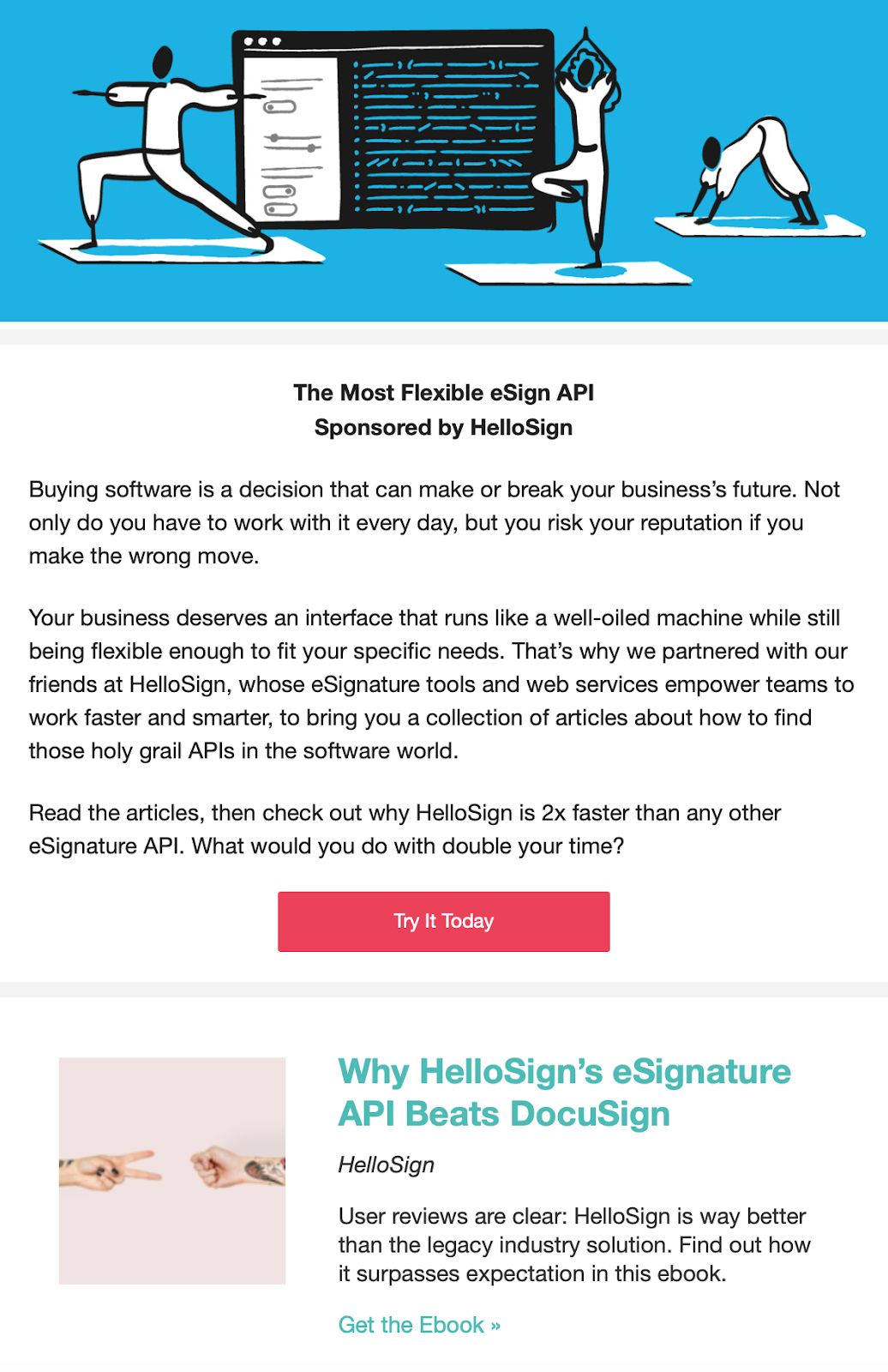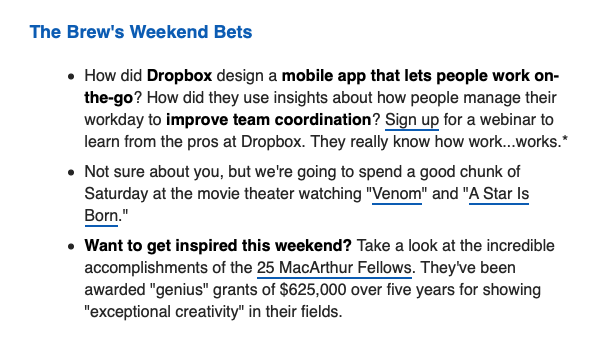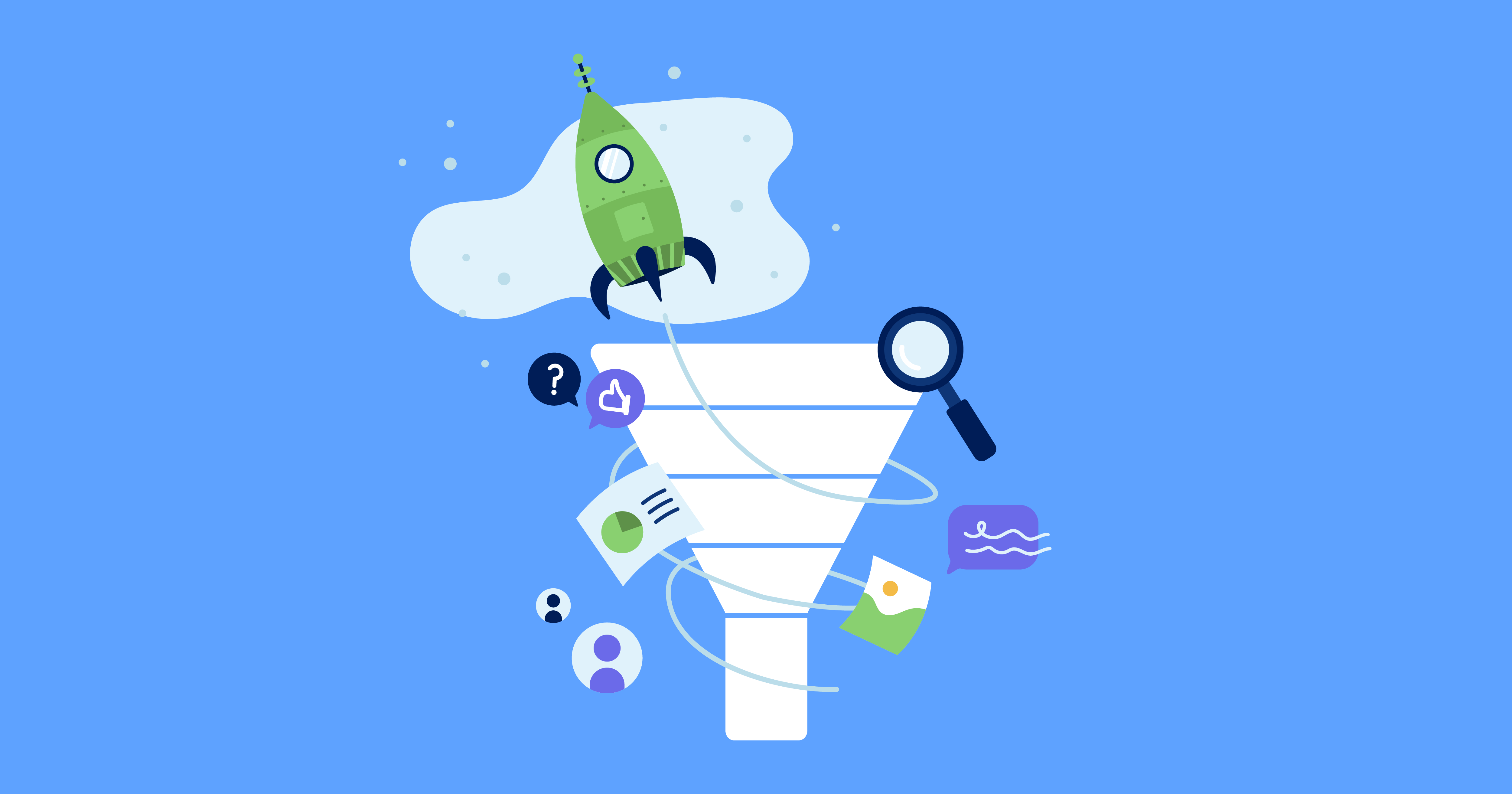When it comes to content marketing, we know that producing great content alone in today's competitive environment is not enough.
Greater importance is now placed on getting your content the exposure it deserves.
Content discovery platforms like Feedly, Reddit and Digg are showing increased popularity among marketers for good reason. These platforms can help in promoting content developed for different funnel (or flywheel) stages, including the brand awareness, lead generation, and customer delight stages.
While we’ve discussed how earned and owned channels are important for different funnel stages, paid channels tend to be more of a swiss army knife when it comes to content discovery, assisting in promotional efforts across any stage in the buying process. For example, companies often use native advertising to help generate early stage brand awareness. Further down the funnel, the same companies are using email placements to directly fuel lead generation.
That said, not all paid content syndication platforms will fit into your marketing strategy the same way. Knowing what to consider when picking platforms and choosing the right creative to accompany your campaigns is key to engaging the right audience and successfully linking campaign outcomes to goals.
Let’s explore how paid content discovery fits into each stage of the marketing funnel.
Creating brand awareness with content discovery campaigns
Content discovery campaigns are frequently used to support content that drives top of the funnel awareness for products and services. These branding campaigns often rely on content that offers strong upfront value to audiences and promotes brand association instead of pushing for sales leads.
Which content works best for brand awareness?
It’s important that when you’re getting on a potential customer’s radar for the first time that you’re providing something worthy of their time and attention.
This is often your first point of contact with a potential customer. You’re kicking off the conversion journey, and as a result, it’s important to use content that provides a tangible value to the reader, whether educational or insightful. Many companies will avoid even mentioning their products directly here.
If you can’t provide something of strong value up front, how do you expect a prospect to want to click a CTA, download a case study, or be more accessible to lower-funnel content and offers?
Writing content that solves a problem in your niche, helps your target audience with something related to their job, or is genuinely interesting in any way would be a great place to start.
Here’s an example of Intercom running an ad on the Pocket app that breaks down the concept of growth, revenue, and sales for potential prospects, tying brand association with a strong understanding of business growth strategies.

Picking the right placements for brand awareness
Of course, early stage advertising is only helpful if it reaches the right group of people. When planning content discovery campaigns with the goal of brand awareness, start by considering the following:
- Where does your audience spend time online? For example, Reddit, or Digg.
- Which websites or platforms does your audience trust for content and advice?
- Are there any websites or publishers that you often pitch for earned placements?
It’s important to pick the right publishers for your content discovery campaigns. Promoting content on low-quality websites or alongside poor quality ads could damage your brand’s reputation in the eyes of your audience.
Running campaigns with trusted websites and platforms has two key benefits:
- Campaigns give you access to a high-quality publisher’s audience, letting you expand your content reach and engagement instantly.
- You receive the benefit of the “halo-effect” from publishers. This means the good feelings that people have towards trusted websites or platforms are often extended to your brand, which is a nice bonus for any top-funnel brand building. Research says running ads with premium publishers can drive 67% higher brand lift compared to non-premium publishers.
Using content discovery further down the funnel
Once prospects know who you are, mid-funnel content can help you position your product or service and kick off the research phase of the buying cycle.
The classic customer journey model is often split into a few phases: Awareness, Familiarity, Consideration, Conversion, Loyalty, and Advocacy. Today the customer journey is more viewed as a flywheel, where the Advocacy and Loyalty stages also fuel the Awareness and Familiarity stages.
While potential customers towards the top of your funnel or flywheel may only have awareness of your product through passive advertising, the research phase is kicked off after this person becomes familiar with your product and may even be considering using it.
During these stages (Familiarity and Consideration) your potential client is trying to figure out what it’s like to work with you, the way you think as a company, how your product compares to others, and whether or not you have a similar approach to them when it comes to solving their problem.
Understanding how to use paid content discovery in the context of the research phase can give you a few advantages, including reaching your audience first (before your competition), controlling the messaging associated with your product, and building trust with potential customers before others have the opportunity.
For example, if you create a product comparison that includes your product and reach your desired audience before your competitors, you’ve exposed your message to your audience in a way that you’re controlling while potentially being the first to do so - not to mention promotion with the right network gives you the ability to do this at scale.
When done correctly, middle stage content can help you be the first one through the door and get moved towards the top of the list of available options in the eyes of a prospective client as they begin to narrow down their list from brands they’re familiar with to brands they’re actually considering.
Which content works best for mid-funnel?
The research phase requires content that answers questions and positions your product as a solution to a user’s needs. Often times, the goal of research phase content is to exchange contact information for a larger content download, free trial, or demo.
For your content discovery campaign, consider promoting articles about how popular or exemplary companies are using your product, use cases for your product related to your target user’s needs, or how your product compares to your competition.
For example, Sysomos, a social media management and listening tool, syndicated one of their own educational posts onto the Pocket App's content discovery newsletter to expose it to a relevant audience of marketers and drove thousands of net new leads.
Comparing your product to others directly takes a lot of confidence to pull off. Below, you can see how HelloSign used the Pocket Hits newsletter to showcase how its API outperforms its biggest competitor.

How do I pick the right placements for mid-funnel campaigns?
While early stage campaign content may help with brand lift in addition to awareness and potentially lead conversion, content further down the funnel and closer to Familiarity and Consideration stages desires action and a captive audience to get results.
Consider which placements have curious audiences that are likely to be interested in reading or downloading content at the exact moment they see your ad. In other words, where and when is your audience most likely to act?
This should not be considered in isolation however, as view-through conversions also play a large role in acquisition. If you are running brand awareness campaigns to this same audience in the right spaces, your audience is already familiar with your brand and has built some trust for the reasons mentioned above.
Mid-funnel content discovery ad formats may include native advertising on websites, audio advertising on podcasts, sponsored editorial on a popular publisher, or syndicated content in email newsletters. The benefit of these formats is that people are engaged when they are consuming this content and it bypasses ad blockers, ensuring verified views. Audiences are more receptive to these advertisements when they’re placed beside content that readers eagerly consume each day.
Boosting customer retention with content discovery
It costs 5 to 25 times more to acquire a new customer than to retain an existing one, yet strangely, customer retention programs aren’t usually high up on marketing priority lists.
What's more, 80% of people look for recommendations before purchasing a product. 84% of people trust recommendations from friends and family over marketing campaigns. Your delighted customers are your best asset when it comes to growth, and focusing on keeping them overjoyed about your business is a smart move. Content discovery for retention doesn’t have to be limited to your weekly customer newsletter. Paid campaigns can engage current customers, convert churned ones, and turn users into product evangelists.
Which kinds of content work best for retention?
Retention ties back to different outcomes. It could refer to getting people to commit to higher-tier accounts, keeping users around longer, or even re-engaging zombie users.
The most effective content at this stage will help people integrate your product or service into their organization. You can show off new features that are often requested by the community, explain how to integrate other products into yours through APIs, educate users on best practices, or showcase customer success stories from people with higher-tiered plans.

Dropbox’s promotion in the Morning Brew is a great example of using content discovery for retention. Think of all the potential user types who would engage with this webinar:
- Users on personal plans who would consider advocating for a business plan at work
- Current Dropbox users who don’t have the mobile app or don’t use the newer collaboration features
- Lapsed Dropbox users who want to hear about new features that didn’t exist before
How do I pick the right placements for retention?
Picking niche publishers is still important for content discovery campaigns at the bottom of the funnel. Now, you want to pinpoint the publishers that have the most overlap with your customer list (past and present).
We’ve outlined some tactics for finding these publishers in our Demand Generation Guide, but you can also ask your current customers which websites, newsletters, and platforms they engage with most.
Content discovery campaigns work for all funnel stages
Paid content discovery campaigns need three things to be successful: a clear goal, the right publisher, and the perfect form of content.
While content types might differ based on the campaign goal, marketers should always seek out publishers that share high-quality content and cater to their specific audience.
Through contextual advertising, advertisers have the ability to choose placements that are unobtrusive and related to the content the audience is already viewing. Different forms of advertising like native ads, sponsored content, and email placements have the power to reach targeted, hard to reach audiences at the right time and most importantly, can be scaled with ease through a single purchase when done through an ad network.
Contextual advertising has its place across all funnel stages but it’s important to know which channel is best for your needs and which content fits each channel. By choosing the right publishers that are the best fit for your brand, you can fuel multiple funnel stages and create a cohesive marketing strategy that supports consistent growth.

